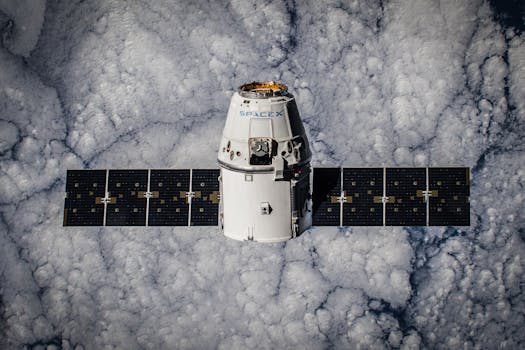
Future of satellites is an exciting and rapidly evolving field, with new technologies and innovations emerging every day. The future of satellites is promising, with advancements in technology and innovations in the industry. From improved communications to enhanced navigation, satellites are playing a crucial role in shaping our world. The use of satellites has become an essential part of our daily lives, and their impact will only continue to grow in the future.
The development of satellites has come a long way since the launch of the first artificial satellite, Sputnik, in 1957. Since then, thousands of satellites have been launched into space, and the industry has experienced rapid growth. Today, satellites are used for a wide range of applications, including communications, navigation, weather forecasting, and Earth observation. The future of satellites holds much promise, with advancements in technology and innovations in the industry.
One of the most significant advancements in the satellite industry is the development of small satellites. These satellites are smaller, lighter, and less expensive than traditional satellites, making them more accessible to a wider range of organizations and individuals. Small satellites have opened up new opportunities for satellite-based applications, such as Earth observation, communications, and technology demonstration. They have also enabled the development of constellations, which are groups of satellites that work together to provide global coverage.
Advancements in Satellite Technology
Advancements in satellite technology are driving innovation in the industry. One of the most significant advancements is the development of high-throughput satellites (HTS). HTS satellites use advanced technologies such as spot beams and frequency reuse to provide higher data rates and greater connectivity. They are being used to provide broadband internet services, including to remote and underserved communities.
Another significant advancement is the development of satellite-based Internet of Things (IoT) services. Satellites are being used to connect IoT devices, such as sensors and drones, to the internet. This is enabling a wide range of applications, including smart cities, precision agriculture, and environmental monitoring.
The use of artificial intelligence (AI) and machine learning (ML) is also becoming more prevalent in the satellite industry. AI and ML are being used to analyze data from satellites, such as Earth observation data, and to improve the efficiency of satellite operations. They are also being used to develop new applications, such as predictive maintenance and anomaly detection.
Innovations in the Satellite Industry
Innovations in the satellite industry are driving growth and expansion. One of the most significant innovations is the development of satellite constellations. Constellations are groups of satellites that work together to provide global coverage. They are being used to provide a wide range of services, including broadband internet, navigation, and Earth observation.
Another significant innovation is the development of reusable launch vehicles. Reusable launch vehicles are being used to launch satellites into space, reducing the cost and increasing the efficiency of launch operations. This is enabling more satellites to be launched, and is driving growth in the industry.
The development of satellite-based services is also driving innovation in the industry. Satellites are being used to provide a wide range of services, including communications, navigation, and Earth observation. They are also being used to provide new services, such as satellite-based IoT services and predictive maintenance.
Challenges and Opportunities in the Satellite Industry
Despite the many advancements and innovations in the satellite industry, there are also challenges and opportunities that need to be addressed. One of the most significant challenges is the issue of space debris. Space debris is a major concern, as it can cause damage to satellites and other spacecraft. The industry is working to develop solutions to this problem, including the development of debris removal technologies.
Another significant challenge is the issue of regulatory frameworks. The satellite industry is regulated by a complex framework of laws and regulations, which can be challenging to navigate. The industry is working to develop clearer and more consistent regulatory frameworks, which will enable greater innovation and growth.
Despite these challenges, the satellite industry is full of opportunities. The development of new technologies and innovations is driving growth and expansion, and the industry is expected to continue to evolve and adapt in the future. The use of satellites is becoming increasingly important, and their impact will only continue to grow in the future.
Conclusion
In conclusion, the future of satellites is promising, with advancements in technology and innovations in the industry. From improved communications to enhanced navigation, satellites are playing a crucial role in shaping our world. The use of satellites has become an essential part of our daily lives, and their impact will only continue to grow in the future. As the industry continues to evolve and adapt, we can expect to see new and innovative applications of satellite technology, and a greater impact on our daily lives.





